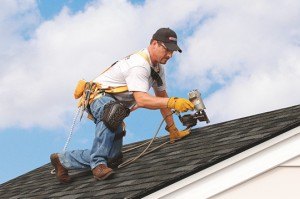Different Ways to be Ripped Off by Denver Roofing Contractors
Engaging the services of Denver roofing contractors for difficult roofing work is not a straightforward undertaking. While most contractors are honest in their dealings, some roofers simply cannot be trusted. Knowing how to spot these dishonest contractors makes a difference between spending the right amount for the work required and losing hard-earned savings to unscrupulous contractors.
Using Shortcuts
Contractors can shorten the completion time of a project by saving on labor time through the use of shortcuts. Houses that are greatly damaged by hurricanes have poorly-secured roofing and substandard framing. The most common cause of shingles getting blown by strong winds is the inadequate use of fasteners. Shingles tend to buckle and eventually lift or separate when subjected to strong winds, which raises the risk of rainwater leakage. By skimping on the basics, roofing contractors manage to complete a project in record time while saving substantial money from the reduced number of materials and labor needed to finish the roof. The result is a poor and substandard work that is prone to all kinds of damage and disaster.
Baiting and Replacing
Dishonest contractors under a package contract with homeowner will intentionally wait until the project is well under way before advising their client that a certain product is no longer available, and offering a more expensive substitute or upgrade for the discontinued product.
Another common dishonest practice for roofing contractors is substituting low-end materials for the high-grade ones that were agreed upon. For instance, they could use galvanized nails instead of stainless steel nails in fastening cedar shingles. Distinguishing the difference between nails just by looking at the nail tops on the roof surface is difficult. Other contractors use sheet metal drip edge in place of aluminum drip edge, which most homeowners cannot easily distinguish.
Overpricing of Materials
Knowing the prices of the different materials that your contractor will be using on your house is advisable. Directly inquire from the suppliers the wholesale and retail prices of each item. If your contractor intends to add a markup on the prices, set a cap or limit in your contract to avoid overpaying for materials that could have been purchased at much-lower prices.
Skipping Preparations
Contractors can increase their profits and save on labor costs by skipping preparations. Roofing, painting jobs and wall/door installations are the more common works where violations of this kind are committed by dishonest contractors. Painters may skip on primer or paint only the newer seams. Roofers could apply substandard tar that dries out in a short time and fails to provide protection against leaks.

